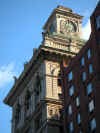 |
New York
Architecture Images-Soho
NY Life Insurance Company Building (now New York City offices) |
|
architect |
Stephen Decatur Hatch/ McKim, Mead and White |
|
location |
346 Broadway |
|
date |
1894-8 |
|
style |
Renaissance Revival |
|
construction |
|
|
type |
Office Building |
|
|
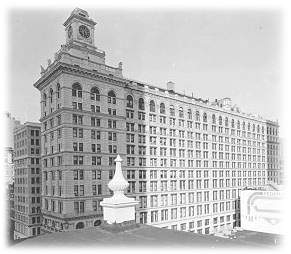 |
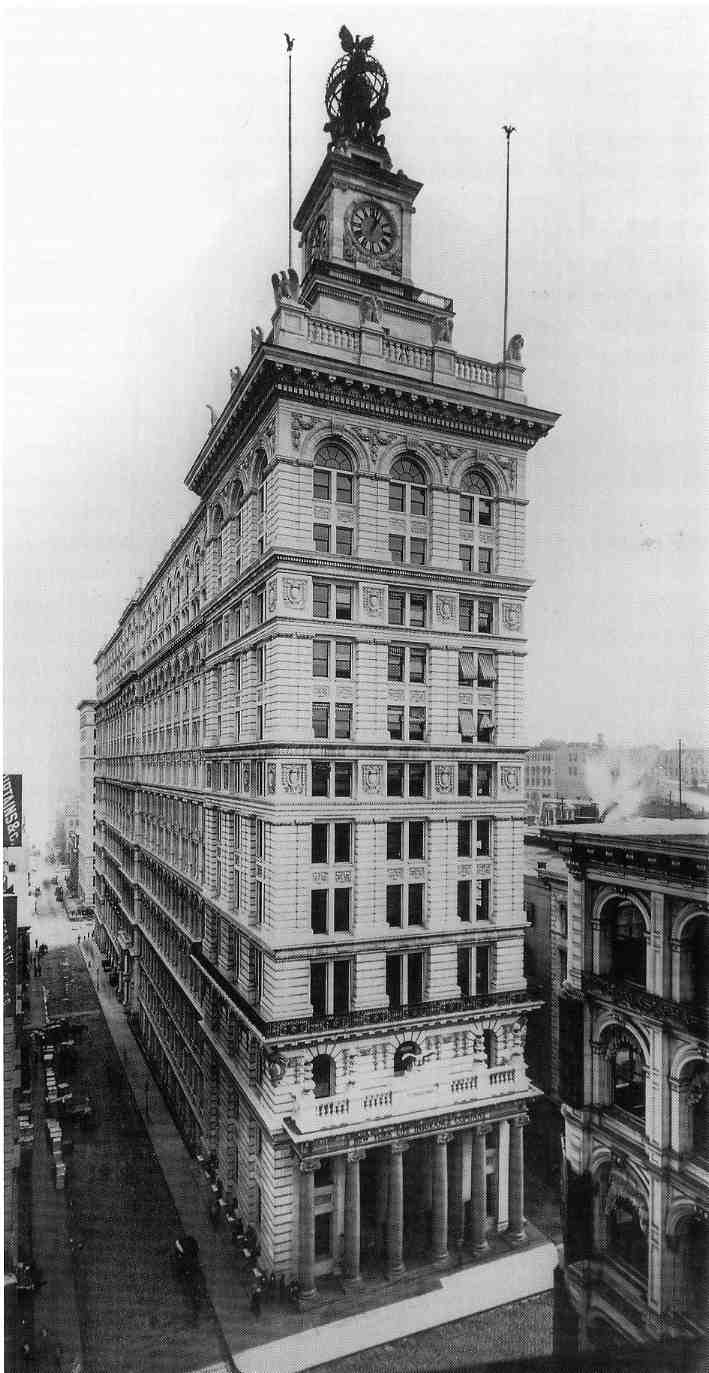 |
|
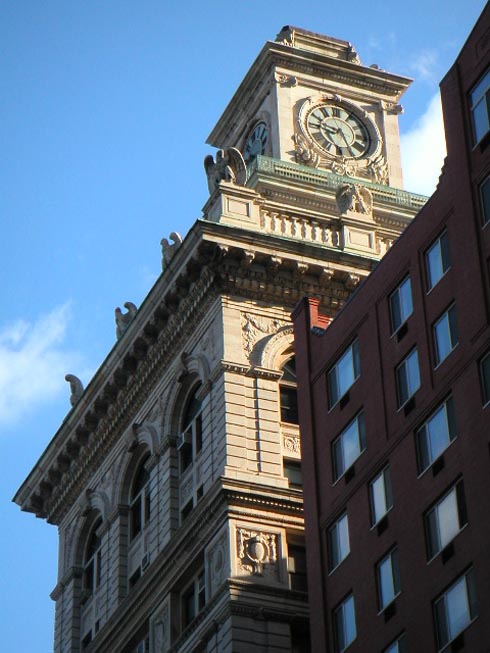 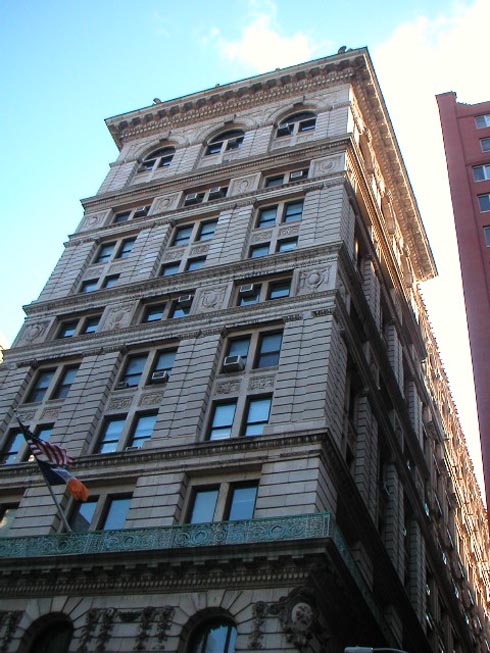 |
|
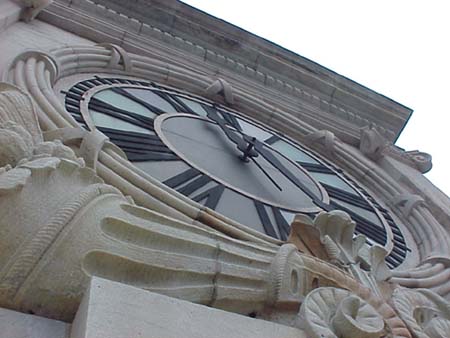 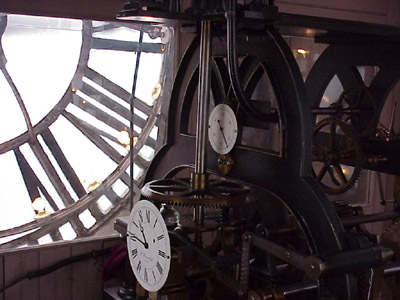 |
|
|
notes |
The Clock Tower Office Building,
originally the home office of the New York Life Insurance Company, is
bounded by Broadway, Leonard Street, Lafayette Street and Catherine
Lane.
The New York Life Insurance Company moved to Madison Square in 1927. The Clock Tower continued to be used as an office building, housing some City agencies as early as 1939. The City of New York bought the building in 1967 and moved the Criminal Court, Summons Part there, along with several City agencies. One of New York's older life insurance
companies, New York Life erected a headquarters building at the Broadway
end of the current site in 1868-1870. In 1894, Stephen Decatur Hatch was
commissioned to extend the building eastward. Shortly thereafter he
died, and the commission was taken over by McKim, Mead & White. Hatch's
rear extension was built, but the company then decided to replace its
earlier building. The elevations facing the narrow side streets continue
Hatch's design, while McKim, Mead & White's Broadway frontage is a
flamboyant palazzo- The Clock Tower Building is a designated New York City Landmark, with both the exterior and parts of the interior landmarked. It is also on the New York State and National Registers of Historic Places. Tower Clock The clock was manufactured and installed by the E. Howard Clock Company of Boston, New York and Chicago for the New York Life Insurance Company in 1897. Prior to 1980 the clock had not worked for at least twenty years and had not been lighted for night-time viewing for over thirty years. It was restored, as a gift to the City of New York, by Mr. Marvin Schneider of Brooklyn and Mr. Eric Reiner of Spring Valley, New York. Both are New York City employees who donated their services, working on this restoration on their lunch hours and days off for more than one year. The New York Daily News of December 4, 1979 described their effort: The clock is powered purely by a weight that can be raised either manually by usage of a large key or by a 3/4 horsepower electric motor. In the southeast corner cabinet is located a 1,000-pound weight which powers the time keeping part of the clock off which the four dials run. In the double-width cabinet on the northwest side are located two 800-pound weights which provide power to activate a 70-pound hammer which strikes on the hour. The hammer and the bell which it strikes are located in a chamber above the clockwork. This chamber has louvers on all four sides which allow the sound to go out while minimizing the entry of rain and snow. The bell, weighing 5,000 pounds, is twice the size of the Liberty Bell. It was cast for the Howard company by the McShane Foundry of Baltimore in 1897. On the hour one can observe how a lever, attached to the works, pulls on a cable which activates the hammer in the room above. The Howard Company, in a letter dated October 25, 1895, described the clock as a "No. 4 Striking Tower clock made extra large and heavy in all the parts where strength and size are required of HARD HAMMERED COMPOSITION, arbors and pinions of best OPEN HEARTH STEEL, frame and supports of CAST IRON, disconnecting device for the dial works arranged so that the clock can be readily set from inside the tower, cluster gear for...dial works properly arranged so that the clock can be used...on the Broadway end of the building, movement with Gravity Escapement, compensating two seconds pendulum...and a twelve foot sectional dial with hands, shafting, shafting and all material that will be required to set up the clock...". The Howard Clock Company, still in business, discontinued manufacturing and servicing of tower clocks in 1964. They did, however, provide a replacement pilot-face and small gear located on the works. This clock is unusual, especially in New York City, in that it is completely original. Many clocks, including the New York City Hall clock and the Jefferson Market Courthouse clock, have been electrified. The 346 Broadway clock, in its original state, still lives up to the Howard Company’s guarantee to run accurate to within ten seconds a month. Written by Marvin Schneider, 1985 |
|
links |